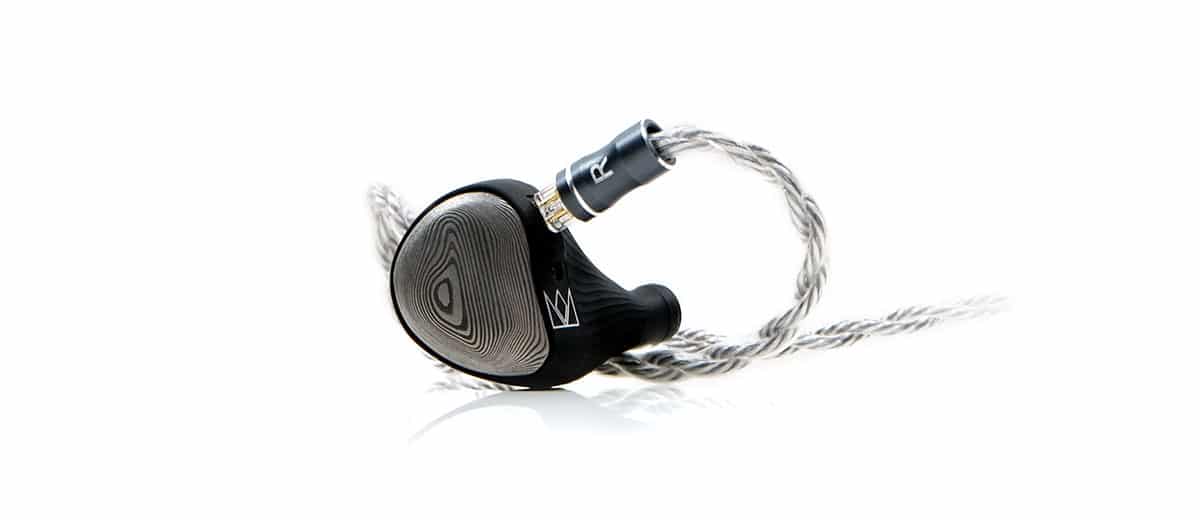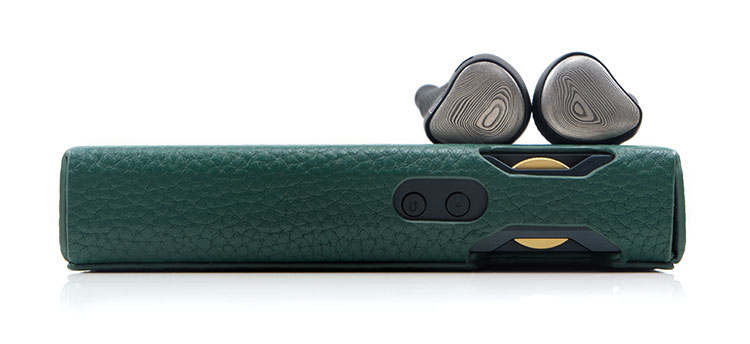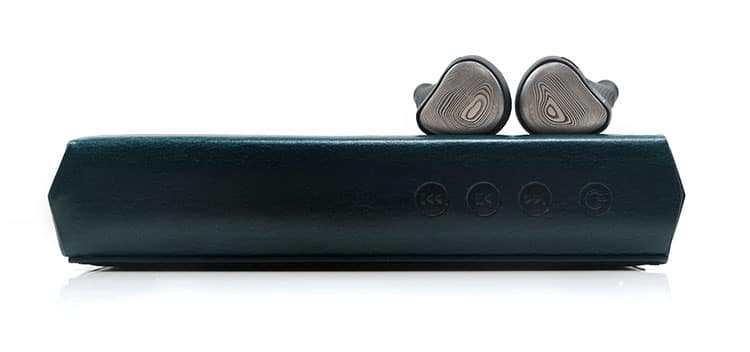Sound Impressions
Sound Summary
The Noble Audio Viking Ragnar is one of the most detailed and expansive-sounding in-ear monitors I have heard to date. Let me be clear though, it’s quite different in tone and FR bias to the likes of the Empire Ears Odin and the Vision Ear’s Phonix, two monitors of which I find to be highly proficient in technical capability also.
Those two monitors focus on a combination of detailed explosiveness, (Odin) and effortlessly smooth listening, (Phonix). The Viking Ragnar, on the other hand, is all about incredible clarity and supreme imaging, especially across the X-Axis of its soundstage.
Think of it like a mini-HD800 in a roundabout way with superlative stereo width and height combined with an ultra-black background allowing every minute detail to flash in and out with incredible accuracy and timing.
It is masterful with intricacies and a nailed-on pairing for complex yet subtle musical passages. If ever there was a monitor tuned for high-fidelity recordings then the Viking Ragnar is it.
It is not all nut cutlet dining though. There is some meat on the bones with those dual dynamic drivers for the lows. It extends just as well as competing hybrid flagships and offers that trademark dynamic driver quality to its sub-bass response.
However, it’s a tighter-sounding delivery with less bloom and a slightly softened mid-bass punch. It will make its presence felt when needed but it’s not an aggressive ‘always on’ feature of the monitor’s performance.
The highs are special though. Just the right balance between sparkle and bright and incredibly detailed and fast sounding. Combined with a neutral to slightly forward midrange imaging experience they add a lot of headroom creating that huge and complex soundstage quality.
Frequency Response
Aside from the upper treble, the FR curve of the Viking Ragnar is a bit more subtle in its troughs and valleys compared to the previous flagship, the Sultan.
It doesn’t hugely follow the Harman Target Curve save for a mild boost in volume for the sub-bass presence though in listening the extension is quite audible down to 20Hz.
Where it dips below the Harman is in the level of mid-bass punch and bloom and the forwardness of the midrange from 1-3k which is slightly south of the Curve with a more neutral level amplitude.
Noble has resisted pumping up the bass and mids to allow for a gentle but linear rise in the lower mids to be clearly heard. That also helps any subsequent bass fundamental from its tightly tuned dynamic drivers to be felt when needed.
The mids are not dipped at all, rather they are quite linear and neutral from 1-4k which in turn helps create a sense of space between you and the performing artist or vocalist. Equally, it allows vocal presence to sound fairly commanding without being shouty. Upper mids are just mildly dipped from 4-5k but don’t suffer from a lack of presence or air.
From 5-8k you get a lot of energy from the Viking Ragnar and even beyond from 10-12k it performs better than the Sultan for overall headroom. Clearly, the additional EST drivers are a factor here in terms of improved extension.
Timbre
The Viking Ragnar runs clean and neutral with a high level of tonal contrast throughout its timbre. Instruments can sound delicate or weighted and responsive when required and feel fairly faithful to both the source and music being played.
If there is one area that might grab your ear it’s the heightened treble response that casts more of an odd-harmonic bias over the upper mids and lower treble.
Percussion passages will sound vivid and expressive but also a little more to the dry side though given the BA driver array covering this range it’s not entirely unsurprising. High-pitching synth spatial notes will deliver a very pure tone and be helped along by that excellent airy and wide staging quality.
Tip selection will influence the general bias of the Viking Ragnar tone and here I tend to work with the stock black wide-bore foam tips.
The stock silicone tips do little for the bass response of the Viking Ragnar and it sounded undersupported in terms of bottom-end weight which can upset the presentation balance too much towards the highs. The black foam tips bring in some softer leading edges and enhance the fullness of the notes in a much more satisfactory manner.
Staging & Dynamics
The sheer scale, particularly width and separation, is one of the defining traits of the Viking Ragnar’s overall performance.
If there is a bias it would be the mids and highs over the lows simply because the lows are not constantly switched on or carrying excessive bloom. However, the dynamic range and snap when they do pick up is very clear right down to 20Hz.
I was not understating how HD800-like in terms of casting the imaging out very wide on the X-Axis though I would stop short of saying it sounds artificial in its separation. For a closed-back in-ear monitor, getting that out-of-your-head experience can be a holy grail for some and this one gets nearer than most.
It is not just on the macro level, but also on the micro level. Width is nothing without precise imaging and proper instrumental separation. The Viking Ragnar does both incredibly well making it an excellent choice for both chamber and arena music where space and air are a requirement.
On the more intimate side, acoustical and acapella arrangements do equally well also. Vocal placement and any interplay of layered vocal imaging switches with competing notes are delicate and very articulate sounding to my ear with a lot of space to play with. Nothing feels congested or narrow in the Viking Ragnar staging performance.
Synergy
Efficiency
The Viking Ragnar is rated at 17Ω and 112dB SPL and on paper it seems fairly efficient but like most EST driver hybrids it will suck up a bit more juice than you would expect. It will also be less sensitive to volume changes which can sometimes be a good thing to prevent sudden dramatic volume increases.
However, it is nothing that would prompt you to switch to a higher gain mode in a decent DAP or avoid using a more portable high-powered dongle-type DAC as your primary source such as the Questyle M15.
Compared to the likes of the hybrid Sultan which has half the EST driver count the Viking Ragnar needs about 2-3dB more volume using the likes of the LP P6 Pro and Cayin’s N8ii with the Odin coming a bit closer in terms of volume requirements with the same sources.
The only one of our selected comparison monitors that were substantially more sensitive was the Vision Ears Phonix which is an all-BA model and VE is known for developing fairly efficient monitors aside from the Elysium and the EXT which are also hybrid EST models.
The Viking Ragnar is also an impressive performer when it comes to noise with none of our tested DAPs producing any detectable hiss using a 4.4mm balanced output including the P6 Pro, Cayin N8ii, and the FiiO M17.
Pairings
Tips
It is probably worthwhile starting here because what tips you decide to use has a much more demonstrable impact on timbre and bass dynamics than a lot of the source pairings I worked on during the review.
I tested five types of tips, including the three stock and 2 aftermarket versions, Final E and SpinFit CP145. The three stock tips are a silicone single flange, wide-bore black foam, and narrow-bore off-white foam.
Out of these three, the wide-bore black foams were the clear winners for my preference when paired with the Lotoo PAW Touch Gold. They offered the best bass weight and midrange body and applied a gentle softness to the treble performance that improved the coherence and listenability of the Viking Ragnar.
The silicone single bore tips drained the bass a bit too much away giving it more of a brighter tone. So, despite offering a bit more air and clarity than the foams it felt the importance of the fundamental was too diminished giving the soundstage a very shallow quality.
Out of the aftermarket, the Final E grabbed my attention more than the SpinFit. The Spinfit was like a halfway house between the stock foam and silicones with a gentler warmer tone and a nice balance but still not enough dynamics from the low-end.
The Final E was much more robust with the Viking Ragnar with the strongest sub-bass response and the best fundamental out of all the tips. It will sound a shade narrower than the silicones through the mids and a little brighter on the highs compared to the foams though.
Sources
I tested 5 DAPs in total including the DX320 with AMP13, the FiiO M17, the Cayin N8ii, the LP P6 Pro, and the Paw Touch Gold. Aside from that, 2 dongles including the Questyle M15 and the Cayin RU6.
Your preference for which source is your preferred match might come down to a preference of dynamics versus timbre with some of the sources producing stirring high-impact responses from the Viking Ragnar whilst others offered the smoothest performance and the more natural timbre, especially for high-pitching percussion and sibilance.
Dongles
For example, the RU6 excelled for timbre with both offering a rich to slightly euphonic midrange performance with the Viking Ragnar.
The RU6 pushed the midrange and vocals a bit further forward and combined with the foam tips it sounded the smoother of the two dongles also. It takes a little edge off the highs and softens the bass impact so less contrast and perhaps not as dynamic as the Questyle M15 alternative dongle.
The M15 itself was excellent for dynamic impact and sounded more vivid but of the two dongles, this might be the more unforgiving combo with a very high level of contrast on the highs.
DAPs
Between the 4 DAPs, the PAW Touch didn’t seem to offer the most expansive soundstage, though its timbre was very smooth. The Ragnar yielded some nice bass weight but the amount of top-end air felt lacking.
The M17 also offered better dynamic range and impact and was not as sharp as I expected it to be but still leans to the cool side for this pairing.
The N8ii does better with the P+ Class AB with the tube timbre. The solid-state alternative was a little sharper sounding for my tastes with the Ragnar and Class A a little too serene on the low end.
The P+ mode ups the dynamic impact from this combo and really moves the dynamics drivers to a much better level. However, it can only be used with the Class AB operational mode hence switching to tubes timbre produces the best weight and tone for me.
The DX320 AMP13’s maximum power right output socket is a beefy pairing in terms of bass weight and instrumental note density. However, the Ragnar just loved the pure tube left socket output, and certainly, this one played to the superlative separation and width capabilities of the monitor.
The LP P6 Pro was perhaps a mix of some of the best timbral and bass density assets of the best-performing DAPs but with just a bit more intimacy thrown in. It will not challenge the AMP13 for staging prowess but its dynamic range and solid instrumental/vocal weight made it a winner in my book with the Viking Ragnar.



